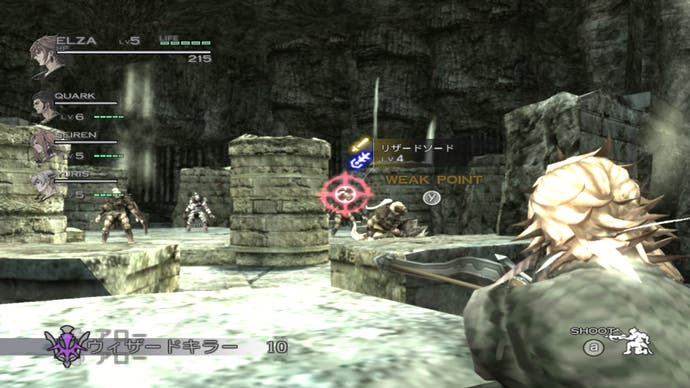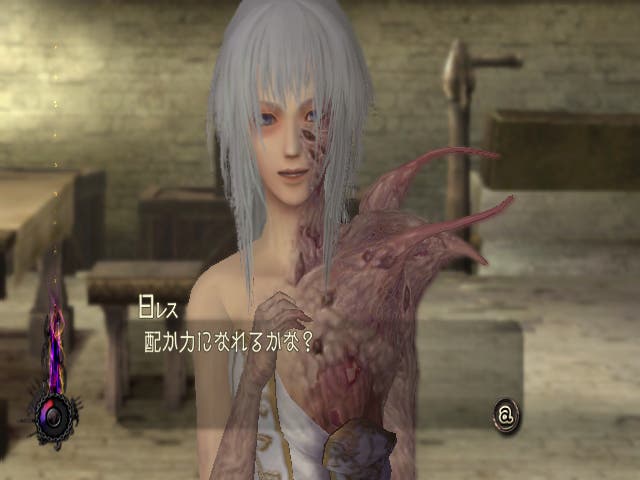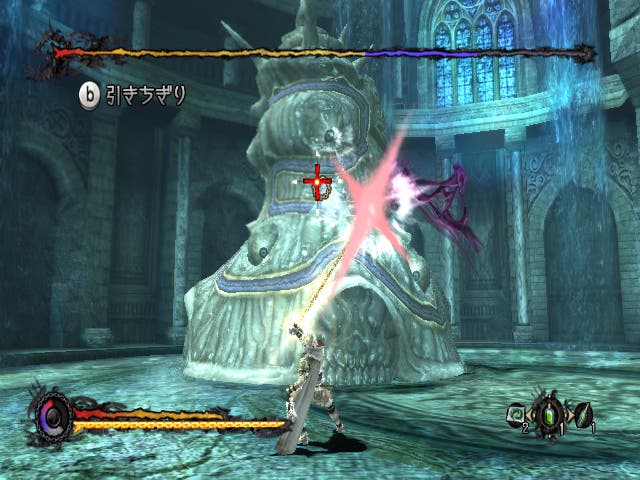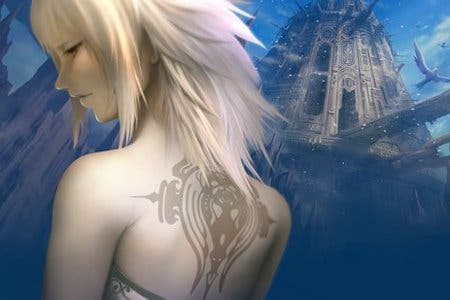The Last Stories
Assessing the Wii's Indian summer.
While Modern Warfare 3, FIFA Soccer 12 and Saints Row: The Third were all topping the PS3 and 360 sales charts in the final week before Christmas, in comparison, the five best selling games on the Wii were Just Dance 3, Mario & Sonic at the London 2012 Olympic Games, Zumba Fitness, Zumba Fitness 2 and The Legend of... actually no, the fifth spot went to Mario Kart Wii, while sixth, seventh and eighth went to Skyward Sword, an ABBA dancing game and "Now! That's What I Call Music: Dance and Sing".
As a Nintendo fan who grew up with a SNES and N64, these sales figures are a little hard to digest, because while I'm all for the expansion of the videogames industry I don't want it to come at the expense of core console games. And even though No More Heroes 2, Monster Hunter Tri and Sin and Punishment 2 have helped save thousands of AA batteries from dying in wasteful silence, they've been the exception rather than the rule.
But then August came along and something unusual happened. After being disappointed time and time again by the "Japan-only" stigma that struck Captain Rainbow, Fatal Frame IV and Sandlot's Zangeki no Reginleiv, Nintendo of Europe finally came good by localising Xenoblade Chronicles. Was this the act of a company trying to get back in touch with its core audience, or was Nintendo simply filling in a gap during the yearly summer drought?
Just like an episode of Come Dine With Me where the host undercooks the main but then pulls it back from the brink with an epic dessert, Nintendo of Europe seem to be making amends by giving the fans what they want. The only question is, are The Last Story and Pandora's Tower worth the wait?
The Last Story
Coming from the same studio that co-developed Blue Dragon and Lost Odyssey, The Last Story looks spellbindingly promising on paper. Rather than a typically turn-based affair as you'd expect from its creator, the father of Final Fantasy Hironobu Sakaguchi, this is a tight experience that restricts your sidetracking options.

It's a less than conventional action RPG that wants you to stay focused on the titular story, and even though the language barrier obscures the finer plot details in our imported copy, we were still able to grasp the general gist as we played through its 43 chapters.
You play the role of Elza, a typical JRPG lead who was orphaned at a young age and now works as a mercenary-for-hire with his eclectic group of friends. This includes a calm but slightly suspicious looking leader, a feisty female brawler who dual-wields a pair of blades, a meek sorceress who's handy with a healing spell and a young magician with a piracy fetish - all replete with trademark JRPG haircuts and outfits with superfluous buttons. The team are then plonked in a cave for the opening chapter where they have to tackle some Uruk-hai lookalikes.
This dungeon introduces you to the core mechanics and while things start out fairly basic - you simply have to walk up to an enemy to clobber them with your sword - a condensed yet flexible selection of techniques gradually emerges. The first is the Gathering ability that lets Elza coerce the attention of nearby enemies, giving your mages a bit of breathing space to work their magic. But rather than the traditional magic missiles, this casting system lets you place areas of elemental potency which can do everything from heal your team to inflicting debilitating status effects.

It's a genuinely refreshing combat system that doesn't involve huge lists of spells or vast spreadsheets of attributes, but instead asks you to put all that crossbow training into practise with an array of venom tipped arrows and banana peel bolts - the latter of which can be used to trip people up. The Last Story surprisingly shares a slither of its genes with Gears of War, as Elza can snap to nearby cover while taking potshots with his rustic sidearm. The game even makes the distinction between so-so shots to the body and booming headshots to the face.
But even though this is an action-RPG that breaks the mould with its mesh of gameplay systems - to the extent where one chapter sees you infiltrating a castle with tranquiliser darts that knock out patrolling sentries - its style and story still smack of a traditional JRPG. The aesthetic is best described as a cross between Renaissance art and anime with a magically arcane twist, while the narrative spirals from a star-crossed love story between Elza and a runaway princess into a war between two island nations.
There's also no escaping the fact that this is a fairly linear game. There are a few sidequests and an obligatory battle arena, but there's only one central city with no supplementary towns to speak of.
But Last Story makes its innovations elsewhere, such as an online multiplayer element that lets you play either cooperatively against bosses or competitively in a battle royal. While it'll unlikely offer much more than a distraction when compared to the main quest, it'll be interesting to see how long this story can keep going once the credits have been and gone.
Pandora's Tower
On the face of it, The Last Story is the product of a traditional JRPG team who are trying something a bit different, whereas in comparison, Pandora's Tower is coming from a studio trying something totally new.
Ganabrion's previous work includes anime tie-ins like One Piece Grand Battle and the excellent Jump Super Stars on the DS, and while this lack of genre specific experience could be cause for concern, it seems the developer has pulled off a CyberConnect2 (only in reverse) by switching from fighting games to a JRPG without falling flat on its face. And it's all thanks to some good old-fashioned ingenuity.

Pandora's Tower sees priestess Ceres suffering from a nasty curse that's slowly mutating her into a Resident Evil cast-off. The road to her recovery is made up of 13 lofty towers which Ende, a knight, has to summit. But instead of packing a sturdy pair of hiking boots and a backpack full of spring-loaded cams, Ende receives an encouraging smile from Ceres and a length of metal links called the Orichalcum Chain. This isn't a standard piece of climbing equipment, as much like a militarised version of Link's own hookshot, this chain can separate the tower's guardians from their life giving hearts.
The chain also offers some interesting options in the action-orientated combat, as while The Last Story benefits from the more traditional ergonomics of a Classic Controller, Pandora's Tower mixes simple sword combos with the ability to aim and chain with the Wii Remote.
This means you can wrench a sword free from the enemy's hands before swinging it around like a wrecking ball, or simply bind their legs before closing in for some hacking and slashing. There's even a tension gauge that lets you build power by pulling back as your ensnared foe tries to struggle free.
The ascent of each tower is broken up by the occasional perilous platform section as well as some action adventure style conundrums, while the bosses themselves also require a certain measure of lateral thinking. The green giant in the first tower is easily made less jolly, but the demonic crustacean in the third is trickier thanks to a shifting weak-point.

There's a consistent tug elsewhere that breaks up the exploration of each tower, as with Ceres slowly mutating back at the safe-house you have to make regular trips back home to keep the curse suppressed. And the only way to do this is to feed her the hearts of lesser enemies that you've harvested with the chain. The lengths some people go to in order to keep their youthful looks, eh?
Cementing the mechanic is a relationship system that ranks the bond between Ende and Ceres by how often you visit, the dialogue choices you make in conversation and any gifts you bring back from your travels. This can affect the game's ending, for better and for worse.
It's a cute touch in what looks like a solid action-RPG that's set in a bright yet sinister world of ancient curses and charged chain combos. The only thing yet to prove itself is the quality of the dialogue but, just like The Last Story, we're looking forward to plundering the depths of the English translation in the coming months.
It all marks an unexpected twist of fate for a console that arguably did more than any other in ushering in an expanded and more casual audience. As it shuffles its way into retirement, Nintendo is working to conduct a graceful swansong for the Wii.

